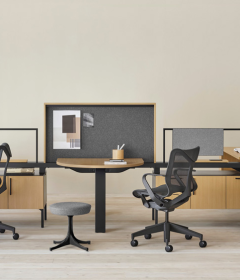Interior Fit Out Basics: Where To Start?

Planning an interior fit-out project can be an exciting endeavor, but it’s essential to start with a solid plan to ensure success. Whether you’re renovating a residential space or designing a commercial interior, knowing where to begin is crucial. Find here the best interior fit out company Abu Dhabi.
Define your goals and vision:
Start by clearly defining your goals and vision for the space. Consider the purpose of the interior, the desired aesthetic, and the functionality requirements. Are you aiming for a modern, minimalist look, or a cozy, rustic feel? Understanding your objectives will guide the rest of the design process.
Assess the space:
Evaluate the existing space to identify any structural limitations, architectural features, or design opportunities. Take measurements and note any elements that need to be preserved, modified, or removed. Understanding the space’s layout and characteristics will inform your design decisions moving forward.
Establish a budget:
Determine your budget for the interior fit-out project, taking into account factors such as materials, labor, furnishings, and contingencies. Be realistic about what you can afford and prioritize expenditures based on your goals and priorities. Having a clear budget will help you make informed decisions and avoid overspending.
Research and inspiration:
Gather inspiration from various sources, such as design magazines, websites, social media platforms, and real-life spaces. Create mood boards or Pinterest boards to collect images, colors, textures, and furniture styles that resonate with your vision. Use these references to inform your design direction and aesthetic preferences.
Develop a concept and design scheme:
Based on your goals, vision, and research, develop a concept and design scheme for the interior fit-out. Consider factors such as color palettes, materials, lighting, and furniture layouts. Create floor plans, sketches, or digital renderings to visualize the proposed design and ensure it aligns with your objectives.
Select materials and finishes:
Choose materials and finishes that complement your design concept while meeting practical considerations such as durability, maintenance, and budget constraints. Explore options for flooring, wall treatments, cabinetry, countertops, and fixtures, keeping in mind the overall aesthetic and functionality of the space.
Depending on the scope and complexity of your project, consider engaging professionals such as architects, interior designers, contractors, and tradespeople. Collaborating with experienced professionals can streamline the process, ensure compliance with building codes and regulations, and achieve optimal results.


